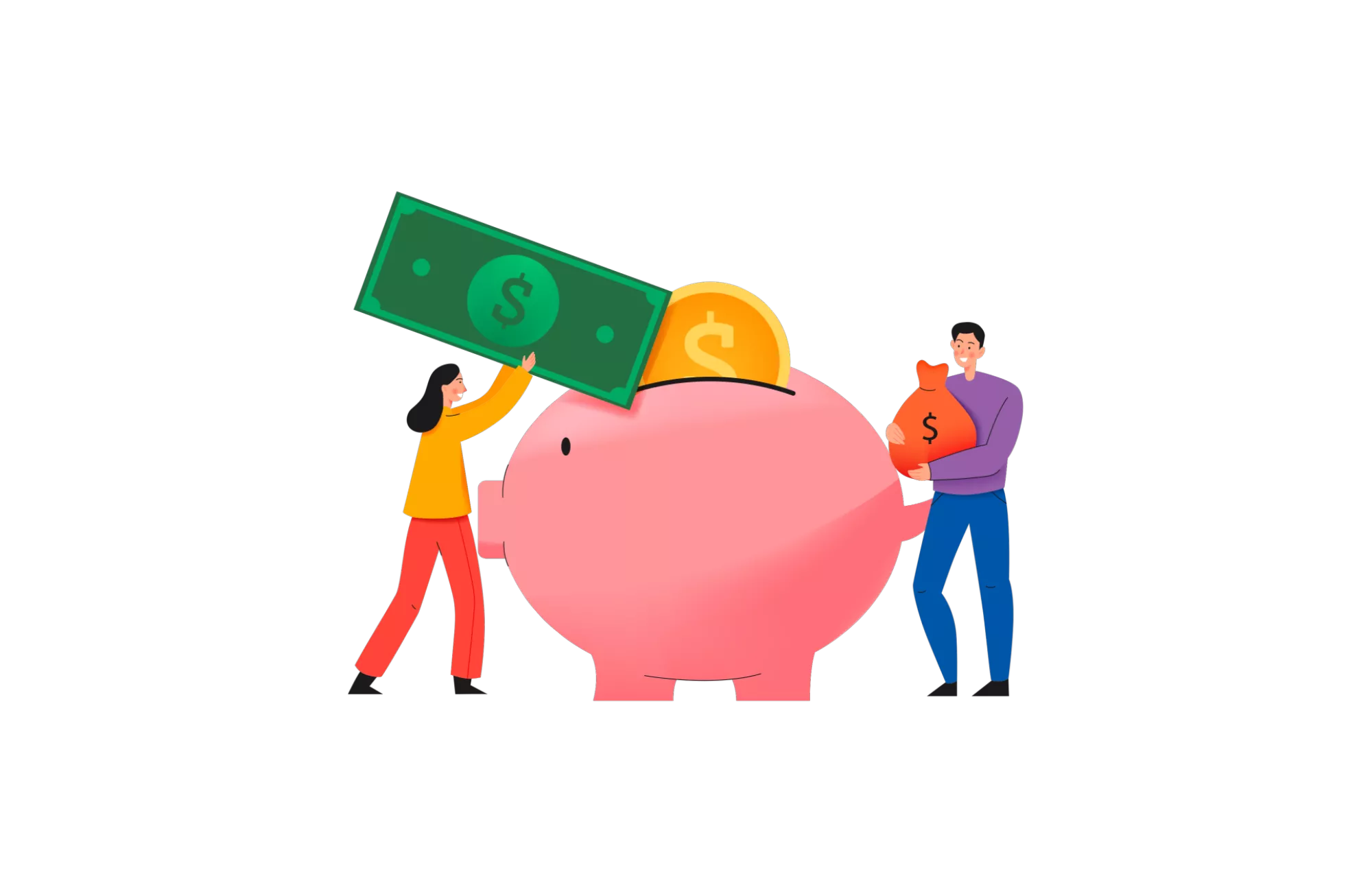TABLE OF CONTENTS
- An Overview of Amazon FBA & Seller Fees and Pricing
- A Breakdown of Amazon Seller Fees
- Amazon FBA Fees
- Amazon FBM Fees
- FBA vs FBM Fees: Key Differences and Benefits
- Trends that Increase Seller Costs
- Alternative Options to Avoid Amazon Seller Fees
- Selling on Amazon Fees: Final Thoughts
- FAQs: Amazon Seller Fees
If you don’t understand Amazon seller fees, you may be hesitant to partner with this third-party marketplace. As the most popular online marketplace in the world, Amazon offers one of the fastest ways to launch an eCommerce business, but that convenience comes at a cost. In this article, we examine Amazon FBA fees, Amazon seller fees, and all other miscellaneous fees you may be subject to when becoming a seller.

An Overview of Amazon FBA & Seller Fees and Pricing
When you start an eCommerce store, there are a lot of moving pieces. You need to consider product storage, shipping, customer support, and website design—just to name a few. And as your business grows, the amount of product you must have on hand may become overwhelming. Enter Amazon FBA!
FBA stands for “fulfillment by Amazon.” With Amazon FBA, you ship your products to Amazon. When a customer purchases your product, Amazon fulfills the order. This simplifies your life as a business owner, allowing you to focus on other aspects of your business. But this simplicity does come at a cost.
A Breakdown of Amazon Seller Fees
The Amazon seller fees you’re charged depend on the type of business you run, the type of product you manufacture, and the amount of volume you sell. Because Amazon offers different fee structures reflective of these parameters, you can choose the best option for your business. However, Amazon fees do add up quickly. To help you evaluate just how much this will eat into your bottom line, below details Amazon’s seller fees:
Monthly subscription fees
Amazon has two monthly subscription fee options:
1. Individual seller fees
If you’re a start-up, new to Amazon, or only selling items sporadically, the Amazon’s Individual plan is a good option. With no monthly fee, an individual seller subscription costs a base fee of $0.99 per sale. However, the limitations of this subscription include:
- No control over shipping rates
- No gift wrapping option
- Manual product listing
- Product category restrictions
2. Professional seller fees
Compared to the Individual plan, the Amazon Professional plan offers many perks benefitting more established or high-volume businesses. You pay $39.99 per month, but you’re not charged $0.99 per sale. This plan offers the following features:
- Inventory management
- Order management
- Bulk product uploads
- Software integrations
- Gift wrapping options
- Customizable shipping rates on select categories
Which account is the best option for you?
If you run a popular eCommerce store or manage a growing business, Amazon’s Professional subscription is worth $39.99 per month. This is especially true if you make 40 sales per month, in which case you’ll incur the same amount of fees for both plans. But if your Amazon venture is a hobby or part-time endeavor, avoiding the monthly subscription fee might be more cost-effective.
Product fulfillment fees
In addition to the base subscription or per-item fees, Amazon charges FBA fulfillment fees in exchange for storing, handling, packaging, and shipping your items. Amazon FBA fulfillment fees are separated into two tiers: standard size and oversize. Within each tier, pricing varies by product type, size, and weight.
Referral fees
On each sale, Amazon charges a referral fee, which varies by category. Once the sale is final, Amazon deducts this fee directly from your account. Amazon’s referral fee is charged in one of two ways: a referral fee percentage or an applicable minimum referral fee. Amazon charges whichever option is greater.
Variable closing fees
Amazon only applies its variable closing fee to sales made within the media category. Amazon labels this category as “BMVD,” standing for “Books, Music, Video, and DVD” products. If you sell products listed in these categories, you’ll be subject to a variable closing fee between $1.35 and $1.80 per transaction.
Other miscellaneous fees
Depending on your industry and business model, below are additional Amazon seller fees to keep in mind:
- Dangerous items: For “dangerous” items, Amazon charges additional fees.
- High-volume listing: Once you’ve listed over 1.5 million items in the marketplace, Amazon charges a $0.001 per-item fee.
- Refunds: If an item is returned and its packaging is not reusable, Amazon charges a fee to repackage the item for you. For FBA orders, an additional return processing fee is charged on items listed in the apparel and shoe categories. However, this fee does not apply to returned items listed in the following categories: watches, jewelry, luggage, handbags, and sunglasses.
Note: The above list is not comprehensive. As such, you may incur additional Amazon seller fees.
Amazon FBA Fees
With Amazon FBA, once an order is placed, Amazon’s team does everything for you. They retrieve your stored product, pack it, and ship it. Additionally, Amazon provides customer service throughout the delivery process.
FBA fees as determined by product size and weight
The FBA fulfillment fees are divided into two tiers: standard-size products and oversize products. Within each tier are smaller tiers, varying by product type and weight. From there, the fees depend on the size and weight of the product.
Each product type in the standard size tier is divided into small or large. Meanwhile, product types in the oversize tier are divided into small, medium, large, or special. The weight of product types in the standard tier is between six ounces to 20 pounds. Meanwhile, the weight of product types in the oversize tier is between 70 pounds to over 150 pounds.
Additionally, a 5 percent surcharge fee is applied to each product to account for fuel and inflation. Products listed in the clothing category or containing lithium batteries incur additional fees of $0.40/unit for clothing and $0.11/unit for items containing lithium batteries.
Monthly storage fees
Amazon FBA monthly storage fees depend on the time of year. To store a product from January to September, you pay $0.75 per cubic foot per month for standard items and $0.48 for oversized products. From October to December, you pay $2.40 per cubic foot for standard items and $1.20 for oversized items.
Fees for multi-channel fulfillment
When Amazon provides its FBA service for items sold on other websites, this is considered multi-channel fulfillment. Because eCommerce platforms may offer different shipping options, Amazon applies its own ranges for product shipment:
- Standard shipping: 3-5 days
- Expedited shipping: 2 days
- Priority shipping or next-day shipping
Amazon FBM Fees
Amazon FBM (FBM standing for “fulfilled by merchant”) means you—as the business owner—pack, ship, and cover shipping costs. While FBM fees are typically lower than FBA fees, your product will not be eligible for Prime shipping, which may deter sales.
Note: Unless you’re on the Professional plan, FBM sellers must use Amazon’s shipping rates.
FBA vs FBM Fees: Key Differences and Benefits
There’s much to consider when deciding between FBA and FBM, but it really comes down to how hands-on you can or want to be in managing your eCommerce store. While FBM is the more affordable, you will be left to do all the grunt work yourself and unable to offer Prime shipping.
It’s important to consider the volume of products you sell. If you manage a highly-trafficked, growing eCommerce store, FBA may be the better choice. With this place, Amazon handles the leg work and allows you to focus on other aspects of your business.

Trends that Increase Seller Costs
While Amazon FBA is a viable option for expanding your business and increasing its revenue, it’s not a perfect system. Below are two events that, if they occur, expose you to additional fees.
Returns
Many products do not incur a return processing fee. However, there are a number of categories in which products may be listed that do incur a return processing fee. Additionally, the return shipping process may result in lost or damaged products, preventing you from reselling the product. If you refund the customer for a product they returned and the product is lost or damaged, this impacts your bottom line beyond just the return processing fee. It’s also good to keep in mind that some returned items cannot be resold.
Stockouts
A “stockout” occurs when you run out of stock. This can happen as a result of many factors, such as a delayed supply shipment, surge in sales, or shortage of supply. While some of these factors are out of your control, you should try to avoid a stockout, as your listing to go offline. This can result in significant revenue loss.
Alternative Options to Avoid Amazon Seller Fees
In an attempt to avoid Amazon’s seller fees, you may consider other marketplaces, such as eBay or Etsy. However, most third-party online marketplaces charge high fees, and eBay and Etsy are no exception.
As an alternative to third-party marketplaces, consider creating and selling on your own website. By launching your own eCommerce site, you’ll have greater control over your brand, customer support, customers and data, and costs. To process payments for your eCommerce business, simply partner with a merchant services provider to obtain a merchant account. (Yes, it’s that easy.) While you will be left handling the shipping of your products, you won’t be subject to a third-party marketplace’s policies or fees.
Selling on Amazon Fees: Final Thoughts
Selling on Amazon can be extremely advantageous. Amazon generated $386 million dollars of revenue in 2020, showing just how powerful of a marketplace it is. And Amazon can even simplify shipping, all while getting your product in front of the eyes of potentially millions of people. But you must consider all the Amazon seller fees. Quickly adding up, selling on Amazon can cost more than you may have imagined. If the seller fees on Amazon are too high for your budget or your bottom line, consider an eCommerce merchant account for guidance on accepting payments at a lower cost.
We Work For You!
So, you will always get a fair deal.
Transparent
FAQs: Amazon Seller Fees
What percentage does Amazon take overall?
This is a complicated question. There are many factors determining what Amazon takes from each sale. For example, fees are dependent on whether you have a Professional or Individual seller account, you are on the FBA or FBM program, what products you are selling, and other factors.
Is the referral fee included in the FBA fee preview?
No, the referral fee does not appear on the FBA fee preview. You need to add this fee yourself when determining prices.
Are the FBA cost-per-unit fees based on units stocked or on units sold?
There are three types of Amazon FBA fees:
- Order or fulfillment fee: Amazon charges you based on the size and weight of the item. Large, heavy items are more expensive, and smaller cheaper.
- Storage fees: To store items in Amazon’s warehouse, you pay an additional fee for the size of your products based on how much warehouse space they take up.
- Long-term storage: Items sitting on an Amazon warehouse shelf for too long incur what is called a long-term storage fee. Calculated twice a year, this fee applies when an item has been in its storage facility for longer than six months.
Ultimately, Amazon charges by units stocked and by units sold.
How much are Amazon’s global selling fees?
Amazon global fees vary depending on your location and your customer’s location. To make your business international, you must register as a global Amazon seller.
Does Amazon FBA pay for shipping?
Amazon charges sellers in their FBA program for shipping. If you participate in this program, Amazon packages and ships your item(s).







